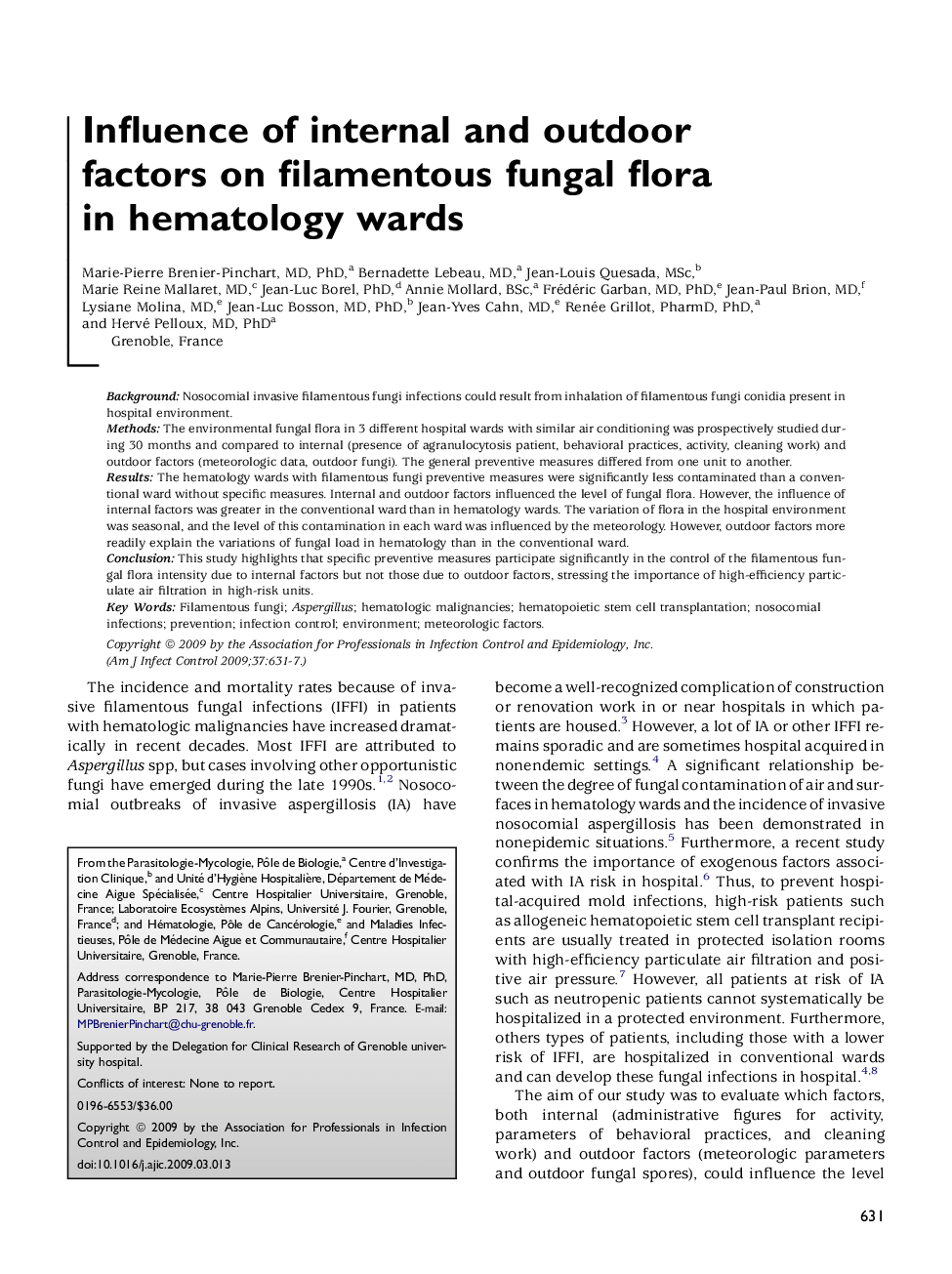| Article ID | Journal | Published Year | Pages | File Type |
|---|---|---|---|---|
| 2638449 | American Journal of Infection Control | 2009 | 7 Pages |
BackgroundNosocomial invasive filamentous fungi infections could result from inhalation of filamentous fungi conidia present in hospital environment.MethodsThe environmental fungal flora in 3 different hospital wards with similar air conditioning was prospectively studied during 30 months and compared to internal (presence of agranulocytosis patient, behavioral practices, activity, cleaning work) and outdoor factors (meteorologic data, outdoor fungi). The general preventive measures differed from one unit to another.ResultsThe hematology wards with filamentous fungi preventive measures were significantly less contaminated than a conventional ward without specific measures. Internal and outdoor factors influenced the level of fungal flora. However, the influence of internal factors was greater in the conventional ward than in hematology wards. The variation of flora in the hospital environment was seasonal, and the level of this contamination in each ward was influenced by the meteorology. However, outdoor factors more readily explain the variations of fungal load in hematology than in the conventional ward.ConclusionThis study highlights that specific preventive measures participate significantly in the control of the filamentous fungal flora intensity due to internal factors but not those due to outdoor factors, stressing the importance of high-efficiency particulate air filtration in high-risk units.
